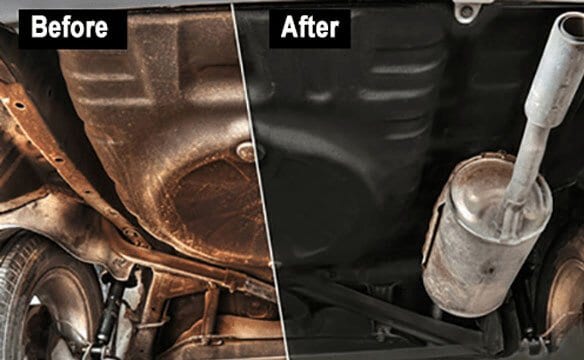For most cars manufactured worldwide, metal makes a significant percentage of the body, especially the chassis. Unfortunately, metal and rust have a destructive relationship that every car owner wishes not to experience. This is because most metals are susceptible to oxidation which causes rusting and eventual corrosion of the chassis and other supporting structures.
No car owner wants that relationship to happen.
How to Prevent Rusting and Keep Your Auto Machine Clean and New?
The best preventive method is to rust-proof your vehicle before taking it for the first ride. This means applying an undercoat and anti-rust solutions to the car at the point of purchase or in a nearby service garage.
However, if you are past this stage, rust-proofing could be a challenge and useless if it is not done properly. But with proper auto rust proofing, it is possible to reclaim the beauty of your used car and prevent further rusting.
The Process
Three main processes are used for auto rust proofing. These include:
- Undercoating
Rusting occurs when metal is oxidized through a chemical reaction involving other materials such as moisture, salt, dirt, and other materials that stick on the body of the car. Undercoating is used to prevent these materials from sticking to the car and, in the process, prevent rusting.
This process involves spraying a mixture of tar, plastic resin, and latex on parts susceptible to rust, such as the underside of the car.
- Oil spray
Oil spraying, also known as Dripless, is another method car service providers use to prevent rusting and reclaim car beauty. The dripless auto rust proofing technology involves the use of a waxy solution to cover the car’s body. The oil spray thickens and hardens as it dries up.
The viscous nature of the oil spray makes it difficult to reach all corners of the vehicle. Therefore, for the best result, this technology will involve some drilling to cover all susceptible areas of the car.
- Drip spray
If you want the best result, drip spraying is the way to go. The drip spraying auto rust proofing technology ensures that all parts of the car, including the inside doors, are covered.
The process involves spraying the anti-rust oil and leaving it to drip and trickle down the car for about 48 hours until it dries up. Like oil spray, drip spray also requires drilling to ensure the car’s interior parts are also covered.
It is important to note that the car must be clean, whichever process you choose to use for rust-proofing. Proper preparation will ensure the rust-proofing process effectively prevents any further rusting. Covering the rust with an undercoat is only a temporary solution.
How to clean your vehicle before auto rust-proofing
- Use a grinder and sandpaper to remove the rust
- Clean away any dust residue after grinding and sanding
- Prime the car and wait for the prime to dry up before painting
- Your car is now ready for auto rust proofing
Important note: The sandpaper should have metal grits of more than 220. Use zinc primer for priming if possible.
Final Words
As mentioned above, the best time to rust-proof your vehicle is when it is still new. This keeps the vehicle safe from rust-promoting materials and will keep the car looking new for a long time. However, if your vehicle is used, you can still reclaim its beauty and make it look new. All you need to do is find a good mechanic that will follow all the auto rust-proofing processes to the letter and use quality anti-rust materials.


